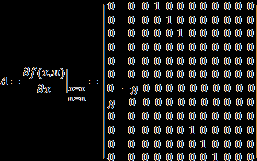Scheduling problems in industry, especially manufacturing, usually involve some machines used for the production process. Production scheduling in the industry has the same sequence in the production process for each machine. The purpose of this scheduling is to minimize processing time for all products on all machines. This scheduling illustration, according to Pinedo in “Scheduling: Theory, Algorithms, and Systems” is called permutation flowshop. This machine scheduling is very important to be implemented in several companies because it can reduce the operational time of the machine and, of course, the resources in the company so that operational costs can also be minimized.
In this study, the Stochastic Fractal Algorithm, a metaheuristic algorithm, is used to solve the flowshop permutation scheduling problem. To test the performance of the algorithm, the problem solution is compared with three other metaheuristic algorithms: Cuckoo Search Algorithm, Flower Pollination Algorithm, and Teaching Learning Based Optimization. Stochastic Fractal Algorithm is a development of the Fractal Search algorithm inspired by natural growth phenomena where there are two main processes, namely diffusion and renewal.
While the Cuckoo Search Algorithm as a comparison algorithm is an algorithm inspired by the parasite nature of several cuckoo species that lay their eggs in other host birds’ nests. The second comparative algorithm according to Yang in the Flower Pollination Algorithm for Global Optimization in International Conference and Natural Computation, Flower Pollination Algorithm is an algorithm that is inspired by the flower pollination process, namely local pollination and global pollination. The TLBO algorithm is an algorithm inspired by the teaching and learning process based on the influence of teachers on student output in class. Teachers and students are two important components of the TLBO algorithm. The TLBO algorithm describes two modes of learning: (i) through the teacher (known as the teacher phase) and (ii) interacting with other learners (known as the learner phase).
The program implementation for the case example of permutation flowshop scheduling uses two measurement criteria: percentage relative difference and average percentage relative. To test the effectiveness of the algorithm, it is implemented on 10 types of data sizes, namely 20 jobs and 5 machines, 20 jobs and 10 machines, 20 jobs and 20 machines, 50 jobs and 5 machines, 50 jobs and 10 machines, 50 jobs and 20 machines, 100 jobs and 10 machines, 100 jobs and 20 machines, 200 jobs and 10 machines, 200 jobs and 20 machines, 500 jobs and 20 machines. Based on the computation results, it is found that the Stochastic Fractal algorithm provides a better solution than the Flower Pollination Algorithm and Cuckoo Search Algorithm. The Stochastic Fractal algorithm also gives a better percentage compared to the three comparison algorithms in terms of a close to the optimal solution.
Author: Asri Bekti Pratiwi
The complete paper can be viewed here: https://aip.scitation.org/doi/10.1063/5.0042196





